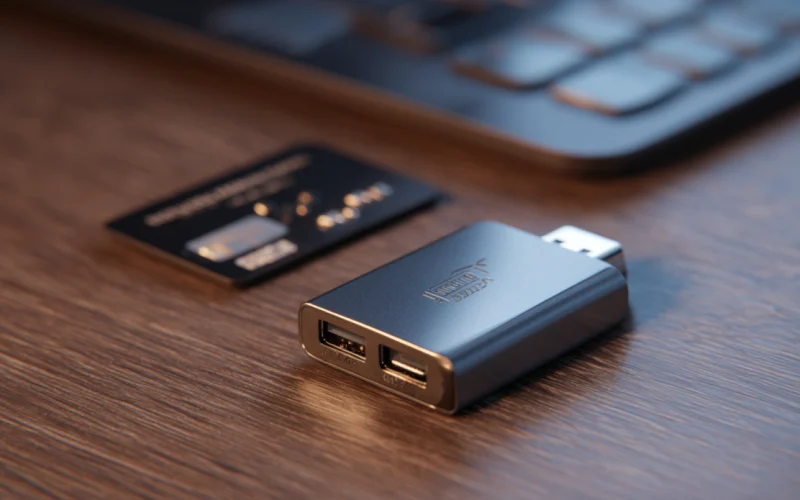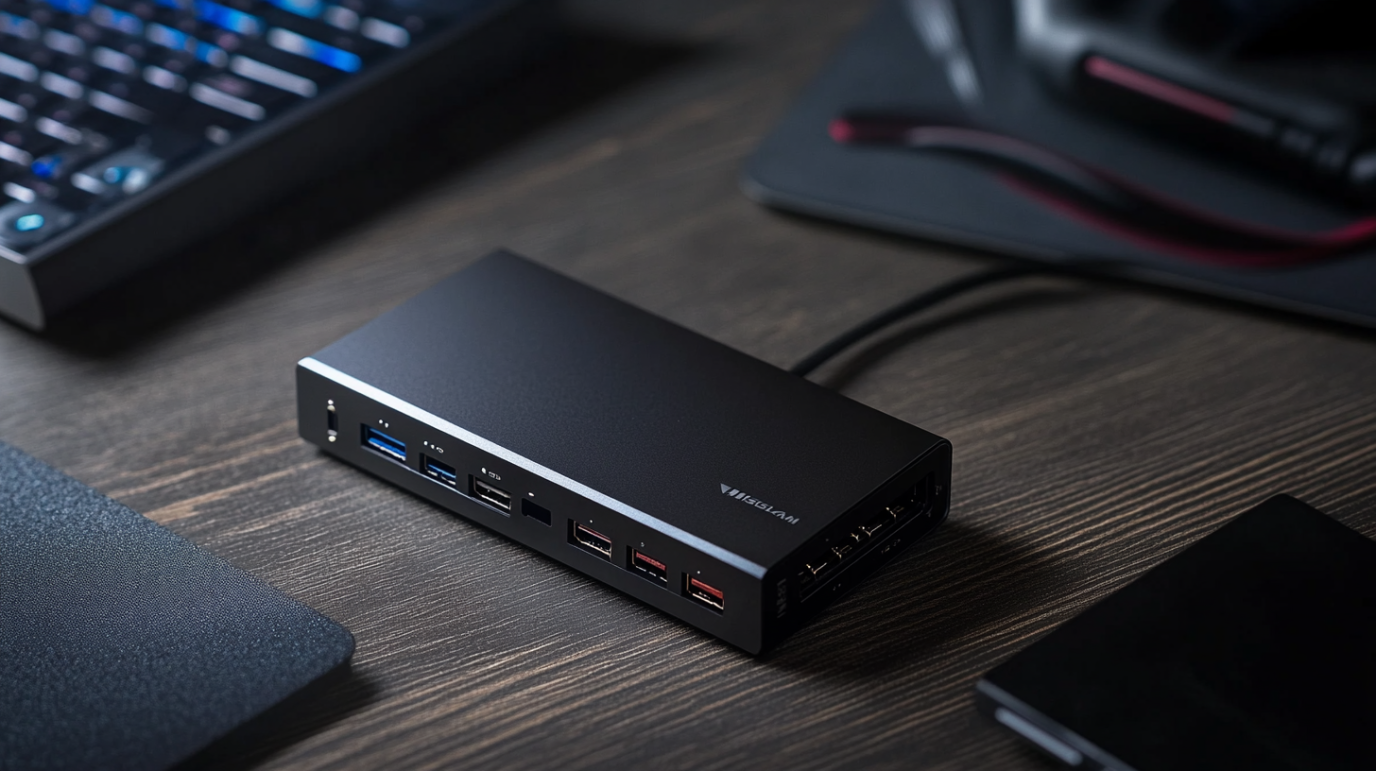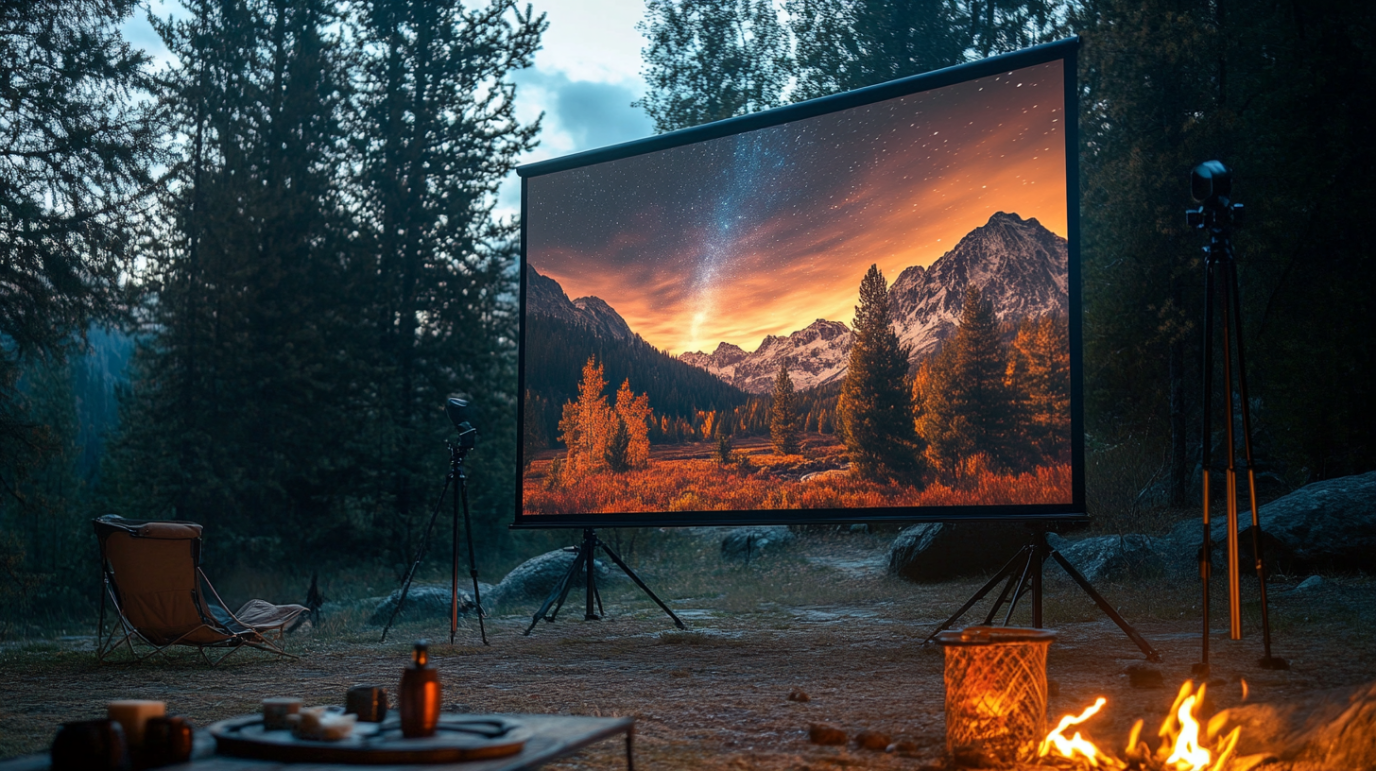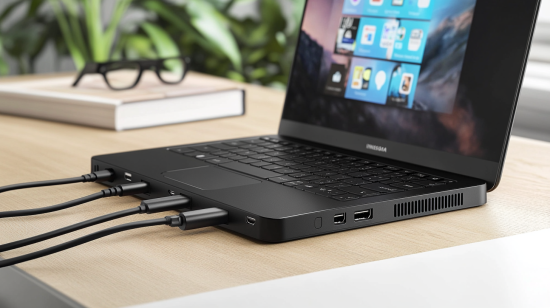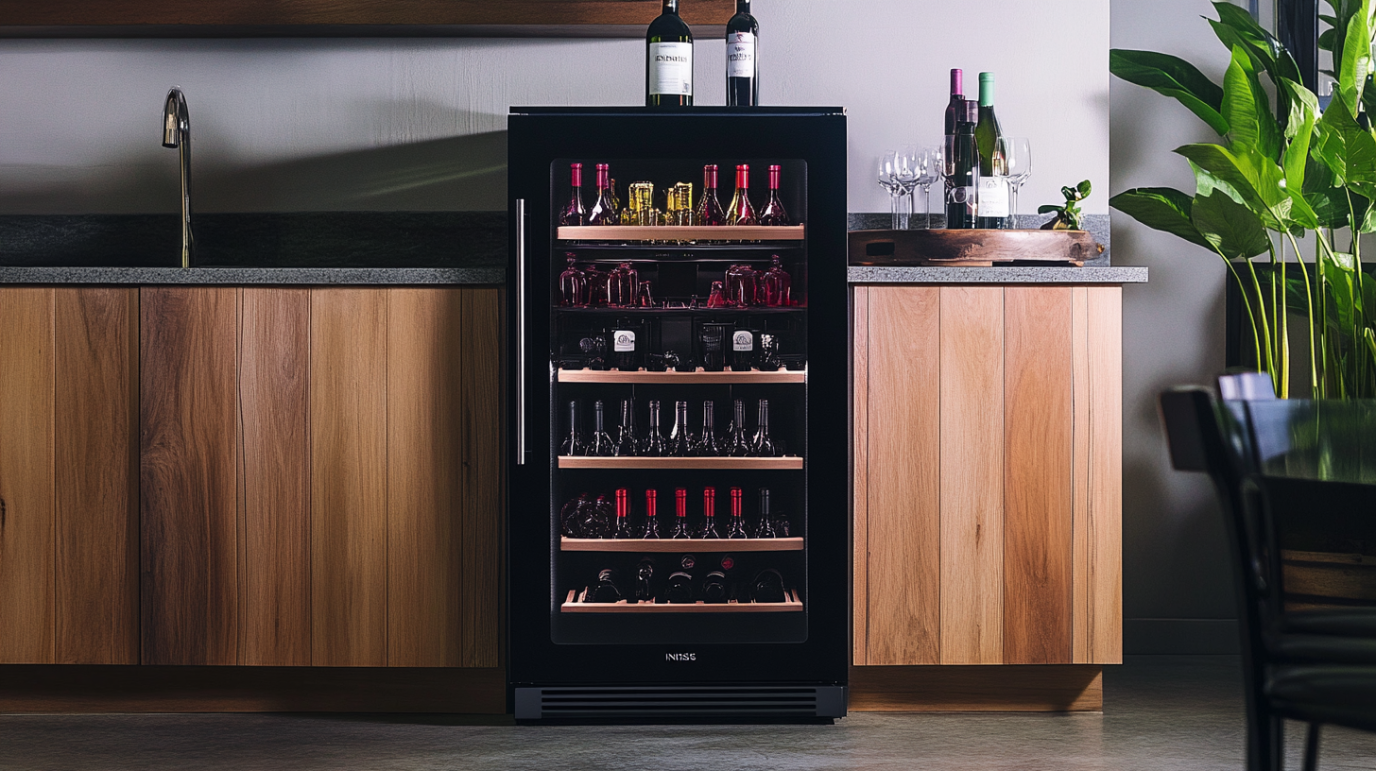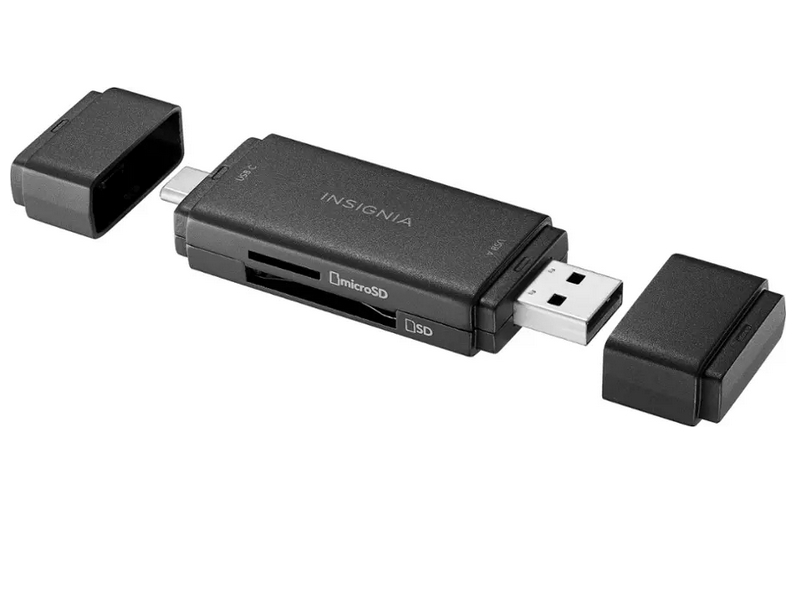
Insignia™ – USB-C/USB 3.0 to SD and microSD Memory Card Reader – Black
- USB 3.2 and USB-C connectors Works with your desktop or laptop.
- Versatile Compatibility Works with Windows, macOS, ChromeOS, iPadOS, Android and iOS (iPhone 15 series with USB-C port) systems.
- Wide-ranging use Supports SD, micro-SD, SDHC, micro-SDHC, SDXC and micro-SDXC memory cards.
- Transfer rateReads and writes up to 95 Mbps/89 Mbps (SD) or 96 Mbps/64 Mbps (microSD).
- Protective caps Keep the connectors safe from damage.
- Compact design Easily fits in a small bag or pocket.
$19.99
Navigating the Digital Bridge Between Your Memories and Devices
As I unpacked my brand new camera after a particularly splurge-worthy Prime Day, I was buzzing with excitement to download the test shots I’d taken around my apartment. That’s when reality hit me—my sleek, modern laptop had exactly zero card slots for my SD card. Sound familiar? This frustrating moment led me down a rabbit hole of research that ultimately ended with an Insignia Card Reader in my Amazon cart. But not before I learned everything there is to know about these handy little devices.
After weeks of using my card reader for everything from transferring vacation photos to rescuing files from old memory cards, I’ve compiled this comprehensive guide to help you navigate your own purchase. Whether you’re a professional photographer juggling multiple memory cards or just someone who needs occasional access to files, finding the right card reader can make the difference between seamless workflow and technical frustration.
What Exactly Is the Insignia Card Reader?
Before we dive deep into features and specifications, let’s clarify what we’re talking about. The Insignia Card Reader is a compact peripheral device manufactured by Insignia, which is Best Buy’s in-house electronics brand. Its primary function is elegantly simple yet incredibly useful—it allows you to access data stored on various memory cards by connecting them to your computer via USB.
I remember when I first held one in my hands. The device is remarkably lightweight, smaller than a deck of cards, with multiple slots designed to accommodate different types of memory cards. The simplicity of its design belies its utility—this unassuming gadget serves as the crucial bridge between my digital camera’s memory card and my computer.
The beauty of the Insignia Card Reader lies in its plug-and-play functionality. There’s no complicated setup process or software installation required. You simply connect it to your computer, insert your memory card, and voilà—instant access to your files.
How Does the Insignia Card Reader Actually Work?
The technology behind card readers is straightforward but fascinating. When you connect the Insignia Card Reader to your computer and insert a memory card, the reader essentially acts as a translator between the memory card and your computer’s operating system.
Memory cards store data in a specific format that needs to be interpreted before your computer can read it. The card reader contains the necessary hardware and firmware to recognize the type of memory card inserted, establish communication with it, and translate the data into a format that your computer can understand and display.
I’ve noticed that once connected, the memory card appears as a removable drive on my computer, just like a USB flash drive would. This allows me to browse, copy, move, and delete files using the same familiar interface I use for any other storage device on my computer.
The transfer process is bidirectional, meaning I can both read data from the memory card and write new data to it (assuming the card isn’t write-protected). This makes the card reader not just a tool for retrieving photos from my camera, but also a convenient way to prepare memory cards with music, videos, or other files I might want to use in compatible devices.
Memory Card Compatibility: Will It Work With Your Cards?
One of the most important factors to consider when purchasing a card reader is compatibility with your specific memory cards. The Insignia Card Reader supports a wide range of memory card formats, which has been a lifesaver for me as someone who works with multiple devices.
Here’s a breakdown of the memory card types typically compatible with Insignia Card Readers:
SD Family:
- Standard SD (Secure Digital) cards
- SDHC (Secure Digital High Capacity) cards
- SDXC (Secure Digital Extended Capacity) cards
microSD Family:
- microSD cards
- microSDHC cards
- microSDXC cards
CompactFlash (CF) Cards:
- Type I CompactFlash cards
- Type II CompactFlash cards (on select models)
Other Formats:
- Memory Stick
- Memory Stick PRO
- Memory Stick Duo
- Memory Stick PRO Duo
- xD-Picture Cards
It’s worth noting that not all Insignia Card Readers support every format listed above. The specific card formats supported depend on the model you purchase. Some models are designed with photographers in mind and offer comprehensive format support, while others are more streamlined and focus on the most common formats like SD and microSD.
I learned this the hard way when I initially purchased a basic model that didn’t support the CompactFlash cards I needed for my older DSLR. Make sure to check the specifications of the specific Insignia Card Reader model you’re considering to ensure it supports your memory card types.
Where to Buy and How Much to Budget
When I started looking for my Insignia Card Reader, I naturally began my search at Best Buy, since Insignia is their house brand. They typically carry several models at different price points, ranging from basic single-slot readers to multi-format professional models.
The basic models, which typically support SD and microSD cards, usually start around $9.99 to $14.99. The mid-range models with expanded format support typically range from $19.99 to $29.99. The professional multi-format readers with additional features like USB 3.0 support can range from $29.99 to $49.99.
Besides Best Buy, you can find Insignia Card Readers at:
- Amazon
- Walmart
- Target
- Office supply stores like Office Depot or Staples
- Electronics retailers like Micro Center
I’ve found that prices can vary significantly between retailers, especially during sales events. I actually ended up purchasing mine during a Best Buy sale event and saved about 30% off the regular price. It’s worth checking multiple retailers and keeping an eye out for promotions if you’re not in a rush to buy.
Another consideration is whether to buy in-store or online. Buying in-store gives you the advantage of immediate availability and the ability to see the product before purchasing. However, online retailers often offer better prices and a wider selection of models.
USB Connectivity: Is USB 3.0 Worth the Extra Cost?
One of the most significant factors affecting performance is the USB standard that the card reader supports. Most Insignia Card Readers come in either USB 2.0 or USB 3.0 variants.
When I was shopping for my card reader, I deliberated extensively over whether the USB 3.0 model was worth the additional cost. Here’s what I learned:
USB 2.0 card readers:
- Theoretical maximum transfer speed of 480 Mbps (60 MB/s)
- Actual real-world speeds typically 25-35 MB/s
- More affordable
- Compatible with both USB 2.0 and USB 3.0 ports (at USB 2.0 speeds)
USB 3.0 card readers:
- Theoretical maximum transfer speed of 5 Gbps (625 MB/s)
- Actual real-world speeds typically 80-150 MB/s
- Higher cost
- Compatible with both USB 2.0 and USB 3.0 ports (but only achieve USB 3.0 speeds when connected to USB 3.0 ports)
For my needs as a hobbyist photographer who occasionally transfers a few hundred photos at a time, I found that the USB 3.0 model was worth the extra $10-15. The first time I transferred a full 64GB card of RAW photos and videos, I was grateful for the investment—the transfer completed in about 8 minutes instead of the 25+ minutes it would have taken with a USB 2.0 reader.
However, if you’re only occasionally transferring a small number of files, or if your computer only has USB 2.0 ports anyway, the basic USB 2.0 model might be perfectly adequate for your needs.
Using the Insignia Card Reader with Different Devices
Laptops and Desktops
Using the Insignia Card Reader with laptops and desktop computers is straightforward. I simply connect the reader to an available USB port, wait a few seconds for my computer to recognize it, and then insert my memory card.
On Windows systems, the memory card typically appears as a removable drive in File Explorer. On Mac systems, it appears as a drive on the desktop and in Finder. From there, I can browse, copy, and manage files just as I would with any other storage device.
One tip I’ve found helpful: if you’re using a laptop with limited USB ports, consider using a short USB extension cable. This allows you to position the card reader more conveniently and reduces strain on your laptop’s USB port.
Smartphones and Tablets
While the Insignia Card Reader is primarily designed for use with computers, I’ve found that it can sometimes work with smartphones and tablets that support USB OTG (On-The-Go) functionality.
For Android devices, I needed to purchase a separate USB OTG adapter that converts the phone’s micro-USB or USB-C port to a standard USB-A port. Once connected, many Android devices will recognize the card reader and allow you to browse the contents of the memory card using a file manager app.
For iOS devices like iPhones and iPads, compatibility is more limited. Newer iPad Pro models with USB-C ports may work with the card reader directly, but for most iOS devices, you’d need Apple’s Camera Connection Kit or a similar adapter.
I’ve successfully used my Insignia Card Reader with my Samsung Galaxy S21 using a USB-C to USB-A adapter, which has been incredibly convenient for quickly transferring photos when I’m traveling without my laptop.
Simultaneous Multi-Card Reading: A Photographer’s Dream
One feature that has proven invaluable to me is the ability to read multiple cards simultaneously. Higher-end Insignia Card Reader models allow you to insert multiple memory cards at once, with each appearing as a separate drive on your computer.
This capability has transformed my workflow after photo shoots. Instead of swapping cards in and out of a single slot, I can insert all my SD cards at once and copy files from each in parallel. For wedding photographers or anyone else who uses multiple cards during a single session, this feature alone can justify the higher cost of a premium model.
However, there’s an important limitation to be aware of: while the reader can recognize multiple cards simultaneously, the internal bandwidth is shared. This means that if you’re copying files from multiple cards at once, the overall transfer speed for each card will be reduced.
I’ve found that for the fastest transfers, it’s best to copy from one card at a time, even if multiple cards are inserted. But for convenience and organization—such as when I want to compare photos from different cards or selectively import from multiple sources—the multi-card capability is extremely useful.
The Real-World Experience: User Reviews and Common Issues
Before making my purchase, I spent considerable time reading user reviews of various Insignia Card Reader models. The general consensus was positive, with most users praising the readers for their reliability, ease of use, and value for money.
However, several common issues appeared across multiple reviews:
- Durability concerns: Some users reported that the plastic housing felt flimsy and that the USB connector or card slots became loose after extended use. I’ve been careful with mine, avoiding unnecessary strain on the USB connector, and haven’t experienced these issues after a year of regular use.
- Inconsistent recognition: Several reviews mentioned that occasionally, the reader would fail to recognize inserted cards or would disconnect unexpectedly during file transfers. I’ve encountered this a few times, usually resolved by removing and reinserting the card or disconnecting and reconnecting the reader.
- Speed discrepancies: Some users reported that their USB 3.0 models didn’t achieve the expected speed improvements. In my experience, this often comes down to other bottlenecks in the system—such as the speed of the memory card itself, the computer’s USB controller, or the type of files being transferred.
- Driver issues: A small percentage of users reported compatibility problems with certain operating systems. I’ve used my reader with Windows 10, Windows 11, and macOS Monterey without any driver issues, but it’s worth checking compatibility if you’re using an older operating system.
Despite these occasional issues, the majority of reviews were positive, and my own experience has been largely trouble-free. For the price point, the Insignia Card Reader delivers excellent value and reliability.
Troubleshooting Your Insignia Card Reader
Even the most reliable technology can encounter issues occasionally. Here are some common problems I’ve encountered with my Insignia Card Reader and the solutions that worked for me:
Card Not Recognized
If your computer doesn’t recognize the inserted memory card:
- Remove and reinsert the card, ensuring it’s properly seated in the slot
- Try a different USB port on your computer
- Restart your computer with the reader connected
- Check if the card works in the original device (camera, phone, etc.)
- Verify that the card format is supported by your specific reader model
Slow Transfer Speeds
If you’re experiencing unexpectedly slow transfers:
- Check if you’re using a USB 3.0 reader with a USB 2.0 port (which will limit speeds)
- Verify the speed class of your memory card (slower cards will limit overall transfer speed)
- Close other applications that might be using system resources
- Try transferring fewer files at once
- Check for background processes like antivirus scans that might be affecting performance
Reader Disconnects During Transfers
If the reader disconnects unexpectedly during file transfers:
- Try a different USB port, preferably one connected directly to the motherboard
- Use a USB port that isn’t shared with other high-power devices
- Check for and install any available USB controller driver updates
- Disable USB power management in your system settings
- Try a different USB cable if your reader uses a detachable cable
Driver Issues
If you’re experiencing driver-related problems:
- On Windows, open Device Manager and check for warning icons under “Disk drives” or “USB controllers”
- Uninstall the device from Device Manager, disconnect it, then reconnect it to reinstall drivers
- Visit the Best Buy support website to check for any available driver updates
- For persistent issues, try the reader on a different computer to determine if the problem is with the reader or your system
In my experience, most issues with the Insignia Card Reader can be resolved with these basic troubleshooting steps. If problems persist, Best Buy’s customer service or exchange policy has been helpful.
Comparing Insignia to Alternative Card Reader Brands
While I ultimately chose the Insignia Card Reader for my needs, I did consider several alternative brands during my research. Here’s how Insignia compares to some popular competitors:
Insignia vs. Anker
Anker card readers typically offer:
- Slightly higher build quality with aluminum housing
- Often faster real-world transfer speeds
- Higher price point
- Similar card format support
- Longer warranty periods
Insignia vs. Kingston
Kingston card readers typically offer:
- More specialized models for specific card types
- Professional-grade options for high-performance needs
- Higher price points for comparable models
- More extensive technical support
- Better performance with Kingston memory cards
Insignia vs. Generic Brands
Compared to generic/unbranded readers, Insignia offers:
- More reliable performance and compatibility
- Better quality control and testing
- Slightly higher prices
- Retailer warranty support
- More consistent driver support
For my needs and budget, the Insignia reader represented the best balance of features, reliability, and value. The deciding factors for me were the availability at my local Best Buy (I needed it quickly for an upcoming trip) and the reasonable price point compared to premium brands.
However, if you have more specialized needs—such as professional photography work that demands the absolute fastest transfer speeds—it might be worth investigating brands like Lexar or SanDisk that offer high-end professional models.
The Future of Memory Cards and Card Readers
As I wrap up this guide, it’s worth considering the future of memory cards and card readers. While cloud storage and wireless transfers are becoming increasingly common, physical memory cards continue to offer advantages in terms of capacity, speed, and reliability—especially for professional applications like photography and videography.
The latest developments in memory card technology include:
- CFexpress cards with speeds up to 1,700 MB/s
- SD Express cards that incorporate PCIe and NVMe interfaces
- Increased capacities exceeding 1TB
- Improved durability and environmental resistance
As these technologies evolve, card readers will need to keep pace. Future Insignia Card Readers will likely incorporate:
- Thunderbolt support for even faster transfers
- USB4 compatibility
- Wireless transfer capabilities
- Smaller, more portable designs
- Enhanced compatibility with mobile devices
For now, though, the current generation of Insignia Card Readers meets the needs of most users admirably. Unless you’re working with cutting-edge memory card formats or require specialized features, today’s models offer excellent value and functionality.
Final Thoughts: Is the Insignia Card Reader Right for You?
After several months of regular use, I can confidently say that my Insignia Card Reader has earned its place in my tech arsenal. It’s one of those unassuming devices that doesn’t draw attention to itself but consistently performs its job reliably.
For photographers, videographers, or anyone who regularly works with memory cards, I believe an Insignia Card Reader is an essential tool that offers tremendous value for its modest price. The convenience of quickly accessing your memory cards without having to connect cameras or other devices directly to your computer is hard to overstate.
When deciding which specific model to purchase, consider:
- The types of memory cards you currently use or plan to use
- The USB specifications of your computer
- Whether you need to read multiple cards simultaneously
- Your budget constraints
- How frequently you’ll be transferring large amounts of data
For casual users who occasionally need to transfer photos from an SD card, a basic model will serve you well. For professionals handling multiple card formats and large file transfers daily, investing in a higher-end model with USB 3.0 support and multi-card capability makes more sense.
Whichever model you choose, the Insignia Card Reader offers a reliable, cost-effective solution to bridge the gap between your memory cards and your digital devices. In an age where computers increasingly omit built-in card readers, having a dedicated external reader has become not just convenient, but essential for many of us.
I hope this guide has helped you navigate the options and make an informed decision about whether an Insignia Card Reader is right for your needs. Happy transferring!

